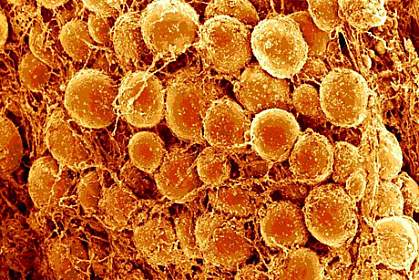For years, researchers have debated over whether brown fat continues to grow after birth. MMRI’s Lin Lab has become the first to prove it actually does.
What is the brown fat?
Brown fat, also known as brown adipose tissue, is a special type of fat that “turns on” (activates) when it chills to help maintain body temperature. It is important to note that brown fat is a biofuel that can increase metabolic rate, decrease fat storage, and hence, decrease the predisposition to develop obesity. Interestingly, it was previously thought that individuals were born with only a finite number of brown fat cells.
Here, and for the first time, a recent publication in Scientific Reports points out that brown fat can continue to grow and divide, even after birth. This finding has important implications; scientists may try to increase the total number of these cells to prevent or reduce the onset of obesity.
The future implications
Dr. Zhiqiang Lin, assistant professor and lead author of the paper, together with his research team at the Masonic Medical Research Institute (MMRI), quantified the number of brown fat cells present in newborn animals. “For years, researchers have been arguing whether brown fat continues to grow after birth; now we can certainly say it does. This discovery opens an entirely new direction for future advancements. Our next step will focus on identifying the developmental signals responsible for the growth of brown fat cells and determining whether we can manipulate gene expression to produce more of them,” Dr. Lin said.
The human body has two main forms of fat: brown fat and white fat. Brown fat acts like a furnace in the body, burning energy and turning it into heat. White fat, on the other hand, works like a freezer, storing energy for posterior use. When the energy consumed exceeds the energy expended, obesity occurs. In fact, it is a consequence of energy imbalance: white fat stores more energy than brown fat burns.
This published paper is the first to suggest that brown fat continues to divide after birth, although only for a small window of 1-2 weeks. With this knowledge in hand, researchers can now question the mechanisms that allow brown fat to grow and potentially conceive ways to continue its spread, as a way to control weight.
Link: https://www.sochob.cl/web1/grasa-parda-implicaciones-en-la-obesidad/
Date: December 11th, 2020
Source: https://medicalxpress.com
Brown fat: implications in obesity
Nutrigenomics Institute is not responsible for the comments and opinions included in this article
Reference: Negron SG, Ercan-Sencicek AG, Freed J, et al. Both proliferation and lipogenesis of brown adipocytes contribute to postnatal brown adipose tissue growth in mice. Sci Rep. 2020 Nov 23;10(1):20335.






